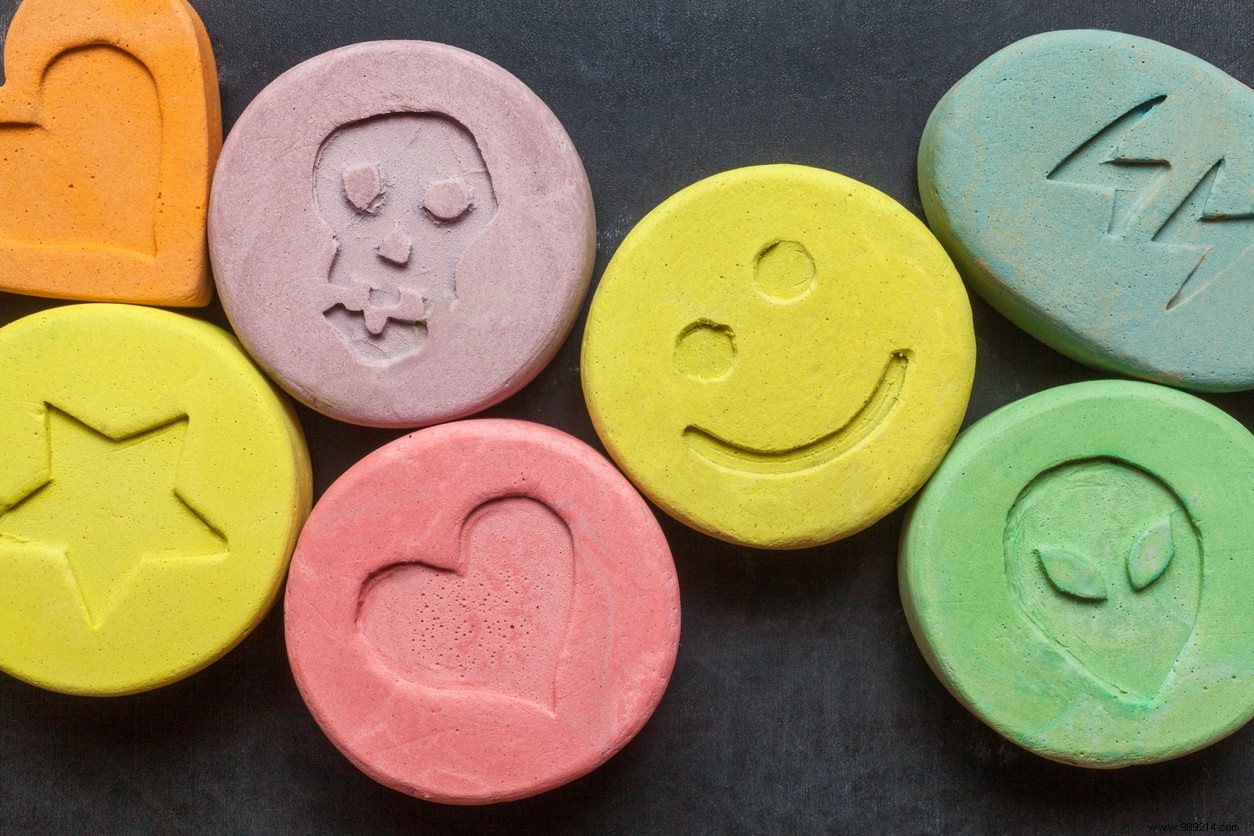About 15 years ago, British doctors studied the case of a person who took around 40,000 ecstasy tablets for almost a decade. At the time of the study, the man was still alive, but was nevertheless facing serious consequences.
Ecstasy is a type of drug containing MDMA, a central nervous system stimulant with special psychotropic characteristics. It is also a sympathomimetic and above all a powerful serotoninergic. This makes this drug neurotoxic in high doses or with regular use. However, in 2006, a team from St George's Medical School at the University of London (UK) published a very specific case study. It concerned a 37-year-old man, whose ecstasy consumption remains the highest ever observed by science. Between the ages of 21 and 30, he took five ecstasy tablets every weekend before going on to consume 3.5 pills a day for three years. Over the next four years, the patient then increased to 25 tablets a day.
In total, the man swallowed no less than 40,000 tablets during its consumption period. In addition, he had also consumed many drugs of all kinds:heroin, cocaine, cannabis, solvents, amphetamines, LSD and benzodiazepines.

The patient in question decided to stop using ecstasy after collapsing three times while out at night. For several months, he was still under the influence of this drug and even suffered bouts of tunnel vision. However, his ailments were much more numerous:functional hallucinations and paranoid ideas, panic attacks and muscle rigidity, especially in the jaw and neck. Tests have also highlighted poor ability to concentrate, poor short-term memory and disorientation over time.
When the patient was admitted by British doctors, he was only using one drug, namely cannabis. Nevertheless, a reduction in his cannabis consumption resulted in reduction of his panic attacks . This also led to the disappearance of his hallucinations and other paranoid thoughts.
When performing an MRI, doctors expected to observe serious brain abnormalities or damage . Nothing came of it, a sign that the patient was, given his consumption of ecstasy and other drugs, particularly lucky. In addition, his brain showed no atrophy (reduction in volume). Moreover, having never suffered an overdose, the man truly defied death. Nevertheless, his case is not to be taken as an example. Indeed, the majority of multiple impairments related to extreme ecstasy use have never been reversed.